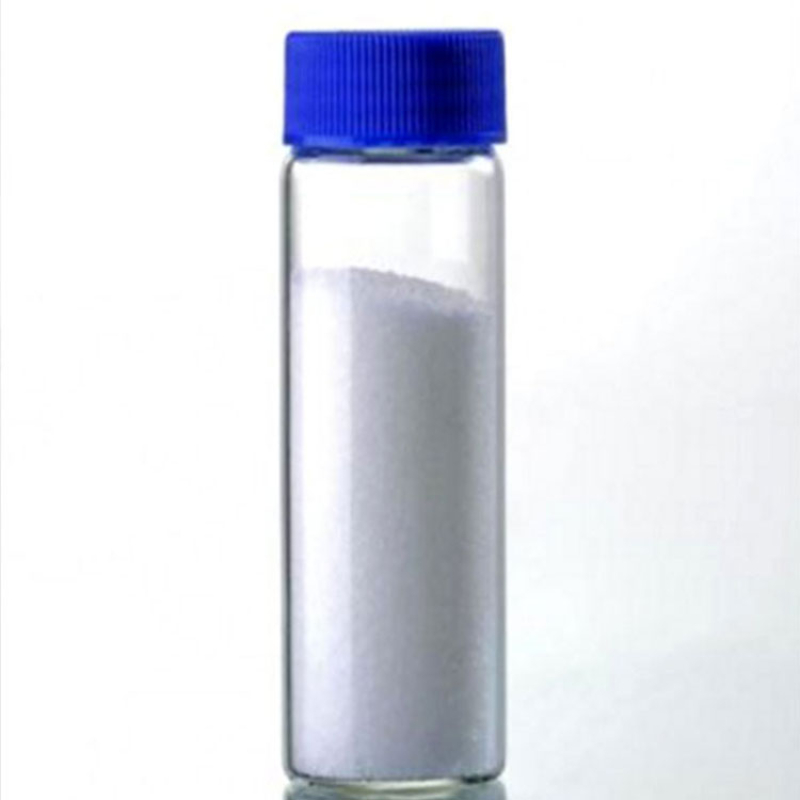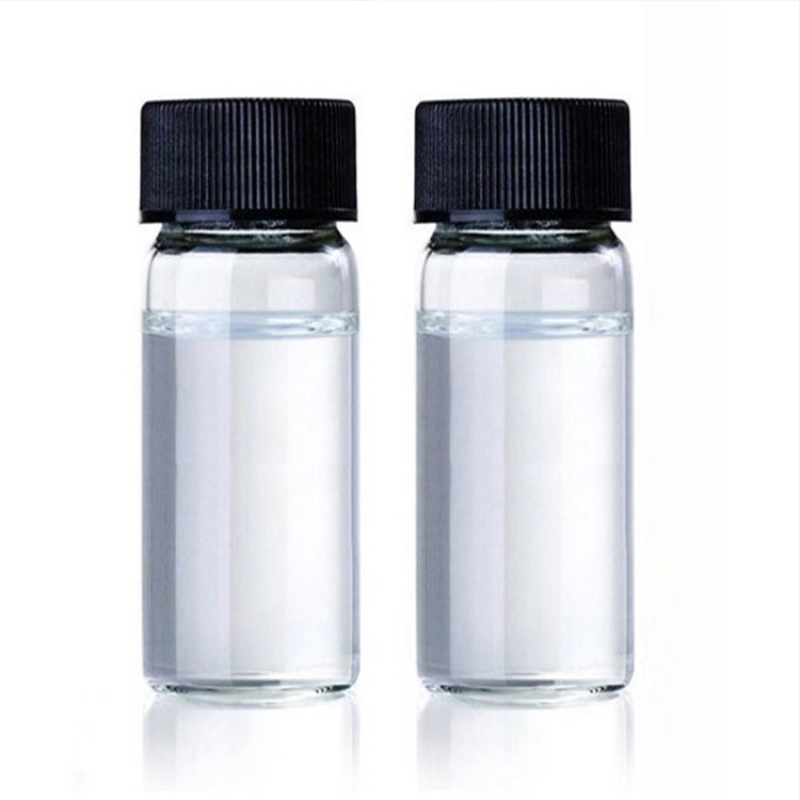Products Description of Aluminium Magnesium Silicate CAS#12511-31-8It is a substance with a very large specific surface area and a very developed microporous system. Its chemical formula is Mg2Al3 (AlSi5O18).
Contact Now
Products Description of Zirconium Silicate CAS#10101-52-7Zirconium silicate is a high-quality, low-cost emulsifier that is widely used in various building ceramics, sanitary ceramics, daily-use ceramics, primary ceramics, etc. It has a wide range of applications and a large amount of applications. Zirconium silicate is also further used in the production of color picture tubes in the television industry, emulsified glass in the glass industry, and enamel glazes.
Contact Now
Products Description of Palmitoylethanolamide (PEA) CAS#544-31-0Palmitoylethanolamide (PEA) is an endogenous fatty acid amide that belongs to the class of nuclear factor agonists.
Contact Now
Products Description of Magnesium oxide CAS#1309-48-4Magnesium oxide is commonly known as magnesia, also known as magnesium oxide. It is a typical alkaline earth metal oxide with the chemical formula MgO. It is a white powder with a melting point of 2852℃, a boiling point of 3600℃ and a relative density of 3.58 (25℃). It is soluble in acid and ammonium salt solutions. It reacts slowly with water to form magnesium hydroxide. It can be dissolved in a carbon dioxide aqueous solution to form magnesium bicarbonate.
Contact Now
Products Description of Magnesium Acetate Tetrahydrate CAS#16674-78-5Colorless crystals, easily deliquescent.
Contact Now
Products Description of Magnesium carbonate hydroxide CAS#39409-82-0This product is white monoclinic crystal with a relative density of 2.254. It is slightly soluble in water and easily soluble in dilute acid. It will foam and decompose in acid to release carbon dioxide. It will generate magnesium oxide and carbon dioxide when heated and calcined.Magnesium carbonate hydroxide Chemical Propertiesdensity 2.16RTECS FG1797000storage temp. 2-8°Cform Solidcolor WhiteOdorat 100.00?%. odorlessWater Solubility Soluble in water.
Contact Now
Products Description of Oxydipropyl dibenzoateCAS#27138-31-4Dipropylene glycol dibenzoate (DPGDB) is a highly soluble benzoate plasticizer, the main component of which is dipropylene glycol dibenzoate.
Contact Now
Products Description of HydroquinoneCAS#123-31-9Hydroquinone is also called hydroquinone and 1.4-benzene. Molecular formula C6H6O2. Molecular weight 110.11. Colorless or white crystals. It changes color easily when exposed to light in the air. Its aqueous solution can oxidize to brown in the air, and oxidizes faster in alkaline medium. Melting point 170-171℃, boiling point 285-287℃, relative density 1.33215, UVλmax 288nm in water. It is easily soluble in hot water, ethanol and ether, and slightly soluble in benzene. It has active chemical properties and is easily oxidized.
Contact Now
Products Description of Coconut oil CAS#8001-31-8Coconut oil is an oil extracted from coconut pulp (dry pulp contains about 63% to 70% oil). It is a white semi-solid lard-like fat. It has a unique coconut fragrance. The main components are glycerides of lauric acid, myristic acid, and oleic acid. The melting point is 23 to 28°C. The relative density is 0.917 to 0.919 (25/25°C). The saponification value is 250 to 264. The iodine value is 8 to 12. The acid value does not exceed 6. It is soluble in alcohol, chloroform, ether, and carbon disulfide, but insoluble in water.
Contact Now
Products Description of LITHIUM METASILICATE CAS#10102-24-6Lithium silicate is a kind of water-soluble silicate. It is an odorless, tasteless transparent liquid. It is soluble in water and alkaline solutions, but insoluble in alcohols and organic solvents. Since the radius of lithium ions is much smaller than that of sodium and potassium ions, lithium silicate aqueous solution has some unique properties. It reacts chemically with acid like sodium water glass to form dioxide gel.
Contact Now
Butylated Hydroxytoluene CAS#128-37-0Aluminium Sulfate (CAS#16828-11-8), also known as Alum, is a white crystalline compound widely recognized for its effectiveness in water purification and its versatility in various industrial applications.
Contact Now
Products Description of Sodium polyphosphateCAS#68915-31-1Colorless transparent glass block or flake. Soluble in water, insoluble in organic solvents. Strong hygroscopicity, easily hydrolyzed into orthophosphate in warm water, acid or alkali solution.
Contact Now
Products Description of L-Threonic acid magnesium salt CAS#778571-57-6Magnesium L-threonate (MgT, pronounced "Mag T") is a chemical substance discovered by Professor Liu Guosong and a team from Tsinghua University and MIT.L-Threonic acid magnesium salt Chemical Propertiesstorage temp. Inert atmosphere,Room TemperatureInChIInChI=1S/2C4H8O5.Mg/c2*5-1-2(6)3(7)4(8)9;/h2*2-3,5-7H,1H2,(H,8,9);/q;;+2/p-2InChIKeyYVJOHOWNFPQSPP-UHFFFAOYSA-LSMILESC(C1=O[Mg+2]2(O=C(C(O)C(O)CO)[O-]2)[O-]1)(O)C(O)COProduct Application of L-Threonic acid magnesium salt CAS#778571-57-6Magnesium, as a
Contact Now
Products Description of Sesamol CAS#533-31-3Sesamol, also known as 3,4-methylenedioxyphenol, is a fat-soluble lignan compound. It is an important component of sesame oil and an important quality stabilizer for sesame oil. Sesamol is present in sesame seeds, sesame oil and sesame meal, and can be continuously decomposed by sesamelin during thermal processing. The highest concentration in sesame oil can reach 64.4 mg/(100 g).Sesamol has a very strong antioxidant capacity and has been proven to have anti-inflammatory and intestinal function regulating effects.
Contact Now
Products Description of Glyceryl monostearate CAS#31566-31-1White or light yellow waxy solid, odorless and tasteless. Relative density 0.97, melting point 56-58°C. Soluble in hot organic solvents such as ethanol, benzene, acetone, mineral oil, fatty oil, etc., insoluble in water, but can be dispersed in hot water to form an emulsion under strong stirring. HLB value 3.8.
Contact Now
Products Description of Glyceryl monostearate CAS#31566-31-1 Glyceryl monostearate is an emulsifier and additive for food; it is used as an emulsifier in cosmetics and pharmaceutical ointments.
Contact Now
Products Description of 2,3,4,5-Tetrafluorobenzoic Acid CAS#1201-31-62,3,4,5-Tetrafluorobenzoic acid is a chemical substance with the molecular formula C7H2F4O2.Colorless flaky crystals.
Contact Now
Products Description of Aluminium 2-ethylhexanoateCAS#30745-55-2Used as thickener for printing inksAluminium 2-ethylhexanoate Chemical PropertiesFp >177°Csolubility very faint turbidity in hot 1mol/L NaOHform Powdercolor whiteWater Solubility moderately solubleInChIKeyITXFWNWNWXSDBB-UHFFFAOYSA-KEPA Substance Registry SystemAluminum, bis(2-ethylhexanoato-.kappa.O)hydroxy- (30745-55-2) Safety InformationRisk Statements 36/37/38Safety Statements 24/25RIDADR 1325HazardClass 4.1PackingGroup IIIHS Code 29319090Factory and Equipment
Contact Now
Products Description of CIS-BUTENEDIOIC ANHYDRIDE CAS#108-31-6Maleic anhydride, also known as "maleic anhydride", is the anhydride of maleic acid. It is a colorless or white solid with a sour taste at room temperature, with a molecular formula of C4H2O3. Molecular weight 98.06. Needle-shaped crystals are obtained from chloroform or ether. Melting point 60℃, boiling point 82℃ (1.8665kPa), relative density 1.31460. Soluble in acetone, chloroform, ether, slightly soluble in petroleum ether.
Contact Now
Products Description of SODIUM TRISILICATE CAS#13870-30-9Sodium silicate is a water-soluble silicate, which can be divided into three forms: solid, liquid, and water-quenched. In theory, this type of substance is called "colloid". Industrial solid sodium silicate is a colorless, slightly light blue, turquoise, sky blue or yellow-green transparent or translucent glass block. When the impurity content is very low, the glassy anhydrous solid sodium silicate is a colorless and transparent glass body, and pure solid sodium cinnamate is a colorless and transparent solid.
Contact Now
Products Description of Isopropylamine CAS#75-31-0Isopropylamine is also known as 2-aminopropane. It is a colorless liquid with an ammonia smell. Its molecular weight is 59.11. Its boiling point is 33-34℃. Its relative density is 0.694 (15/4℃). Its refractive index is 1.3770 (15℃). Its flash point is -37℃. It is miscible with water, ethanol and ether. It is used as a raw material for pesticides, medicines, dyes, rubber vulcanization accelerators, emulsifiers, detergents and water treatment agents.
Contact Now
Products Description of Bitertanol CAS#55179-31-2The pure product is a colorless crystalline solid. m.p. 125~129℃ (diastereomer A is 136.7℃, B is 145.2℃, and the low eutectic of A and B is 118℃). The vapor pressure at 20℃ is <1.0×10-3Pa [A is 3.8×10-3Pa, B is 3.2×10-3Pa (100℃)]. Solubility at 20℃: dichloromethane 100-200g/L (A is 200-500g/L, B is 50-100g/L), isopropanol 30-100g/L [20-50g (A or B)/L], toluene 10-30g/L [A is 10-20g/L, B is 1-2g/L], n-hexane 1-10g/L [≤10g (A or B)/L], water 5mg/L [2.9mg (A)/L, 1.6mg (B)/L]. Partition coefficient 126000 (A), 25000 (B).
Contact Now
Products Description of 1,3-Dimethylurea CAS#96-31-11,3-Dimethylurea, an organic chemical substance, CAS number: 96-31-1, molecular formula: C3H8N2O.1,3-Dimethylurea Chemical PropertiesMelting point 101-104 °C(lit.)Boiling point 268-270 °C(lit.)density 1.142vapor pressure 6 hPa (115 °C)refractive index 1.4715 (estimate)Fp 157 °Cstorage temp. Store below +30°C.solubility H2O: 0.1 g/mL, clear, colorlesspka14.57±0.46(Predicted)form Crystalscolor WhitePH9.0-9.5 (100g/l, H2O, 20℃)Water Solubility 765 g/L (21.5 ºC)BRN 17
Contact Now
Products Description of 4-Morpholineethanesulfonic acid CAS#4432-31-92-Morpholineethanesulfonic acid is a white solid powder at room temperature and pressure. It is soluble in polar solvents such as water, ethanol, methanol, and acetone, but insoluble in non-polar solvents. Its molecular structure contains a morpholine ring and an ethanesulfonic acid group. The morpholine ring is a nitrogen-containing heterocyclic compound with high stability and inertness, and has no obvious toxicity or irritation to organisms.
Contact Now



































